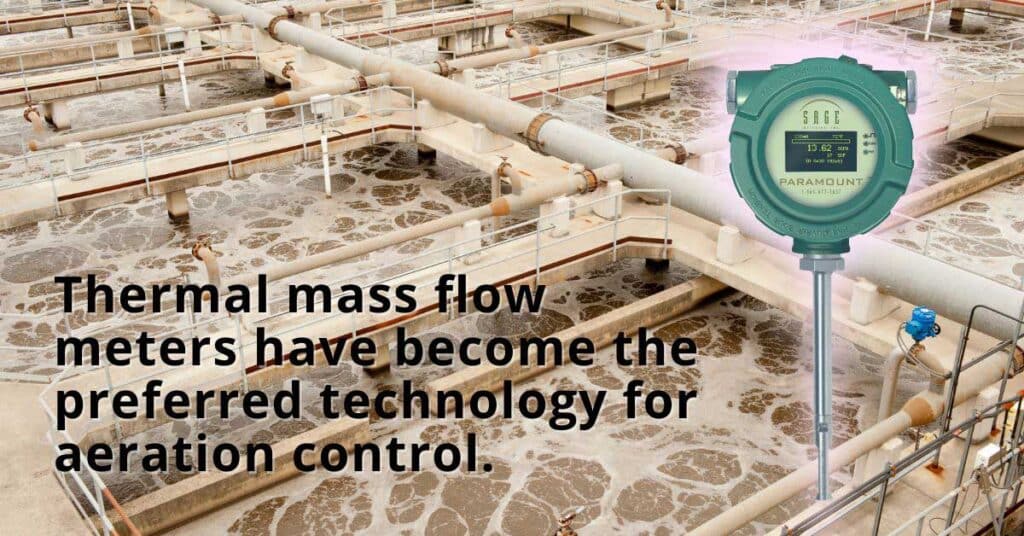Thermal mass flow meters have become the preferred technology at wastewater treatment plants. They measure blower air or compressed air flow to control aeration flow, improve process efficiency, and reduce energy costs.
What is Aeration Flow?
At wastewater treatment facilities, aeration introduces air into the wastewater to create an environment that promotes the growth of microorganisms to decompose the organic waste. The oxygen feeds or nourishes microorganisms within the basin, so the bacteria thrive and consume suspended particulates.
This practice of aeration flow commonly occurs using a subsurface system where the air pumps by blowers and diffusers submerged in the wastewater. Air blowers may feed the main header, which serves multiple aeration basins. From the main header, the air flows to each aeration basin or each zone in an aeration basin. Depending on the design, flow meters may measure the flow to each aeration basin or individual zones in each basin. The total amount of air flowing to the aeration basins is controlled by the basin’s dissolved oxygen (DO) meter.
In older systems, there was little control over air flow, as it was assumed that the more air, the better the decomposition. This viewpoint, however, has changed, given the high cost of compressed air and energy.
-
- Thermal mass flow meters may be installed in the main header to measure the total air flow from the blower/compressor. In this case, there is no control of the air flow to each basin; the meter is merely monitoring air flow to check the performance of the blower.
- Optionally, a flow meter may be installed on each branch line leading to an individual basin where the flow meter is used for balancing the air flow between basins or, in some cases, controlling the flow to each aeration basin.
Aeration Control
Compressed air is one of the highest expenses in the aeration flow subsurface system, accounting for 40-60% of the facility’s operating cost. Aeration control provides the optimum amount of airflow to meet the oxygen demand of each zone while keeping the system pressure as low as possible. This practice helps prevent wasting costly air while achieving efficient decomposition. While control of the air flow to the aeration basin is based on the DO content, ensuring a proper air flow balance to each zone is essential.
A successful aeration control system depends on efficiently operating its system components. The components for each region may include an air flow valve, a thermal mass flow meter (air flow meter), and a DO (dissolved oxygen) meter. The valve, commonly a butterfly valve, is usually installed downstream of the flow meter. Much of the aeration control is predictive, as there is a nonlinear relationship between the airflow and dissolved oxygen content, creating a lag time to reach equilibrium.
Air Flow Measurement
The Sage Prime or Paramount remote-style meter permits an operator to view the air flow from a convenient location. These thermal mass flow meters are ideal for monitoring the main blower air header and the branches leading to the aeration basin. Drop lines to individual zones in larger systems can also be monitored.
Related Articles and Guides
- An Industry Guide for Thermal Flow Meters at Wastewater Treatment Plants
- Technical Note on Aeration Airflow
- A Guide for Using a Biogas Flow Meter
- Greenhouse Gas Emissions Monitoring Using Thermal Mass Flow Meters (white paper)


